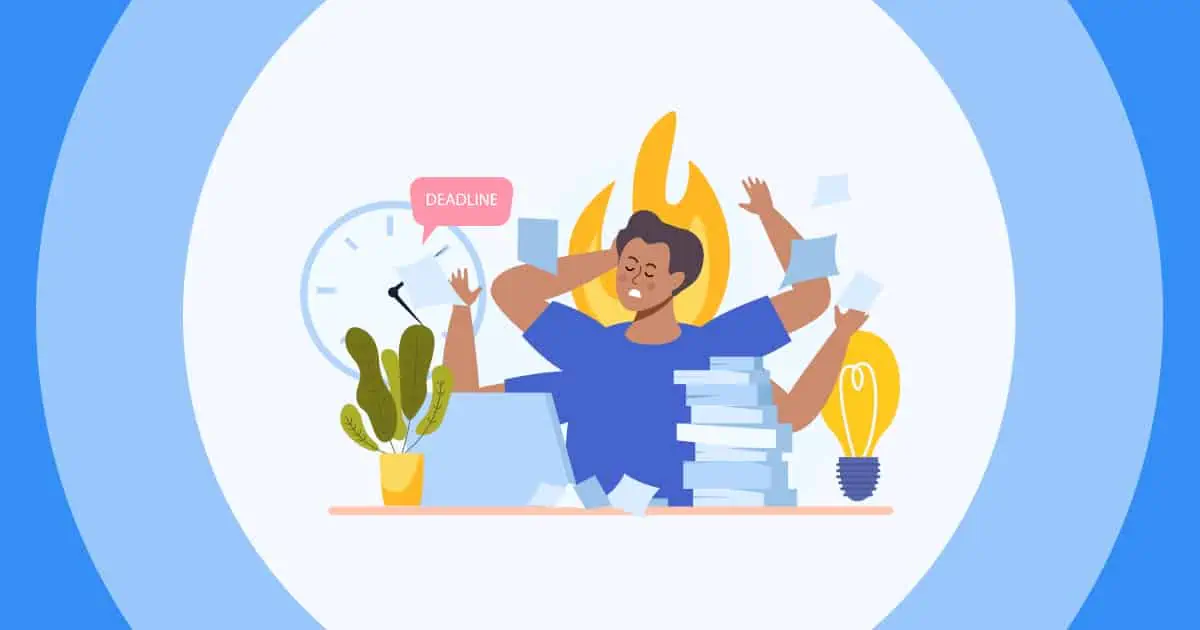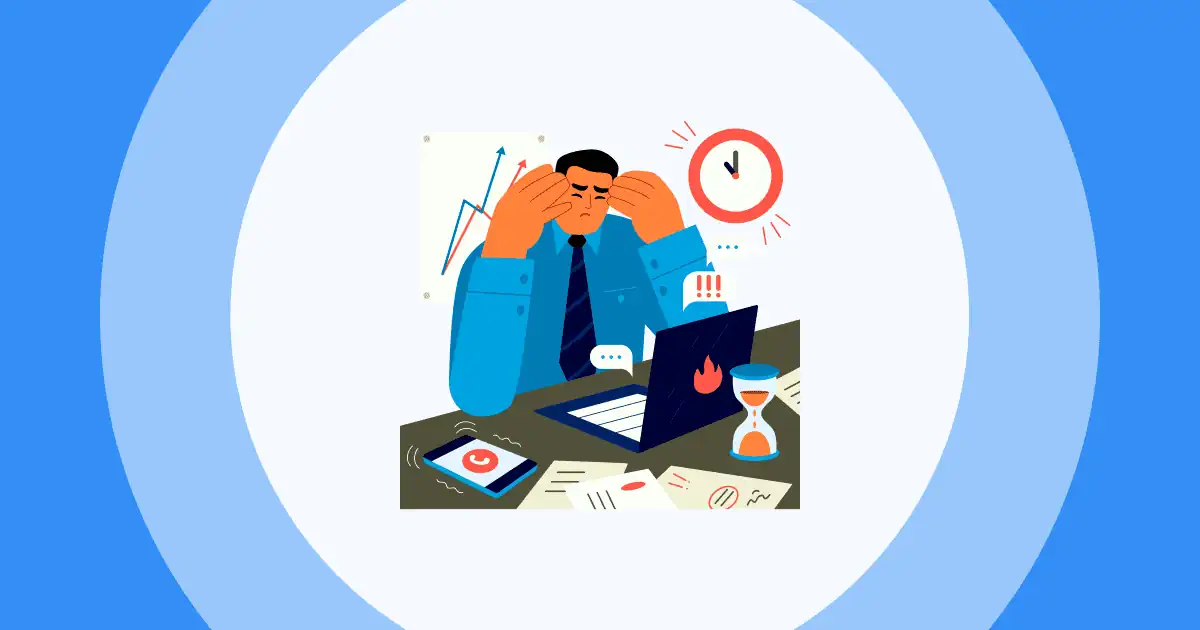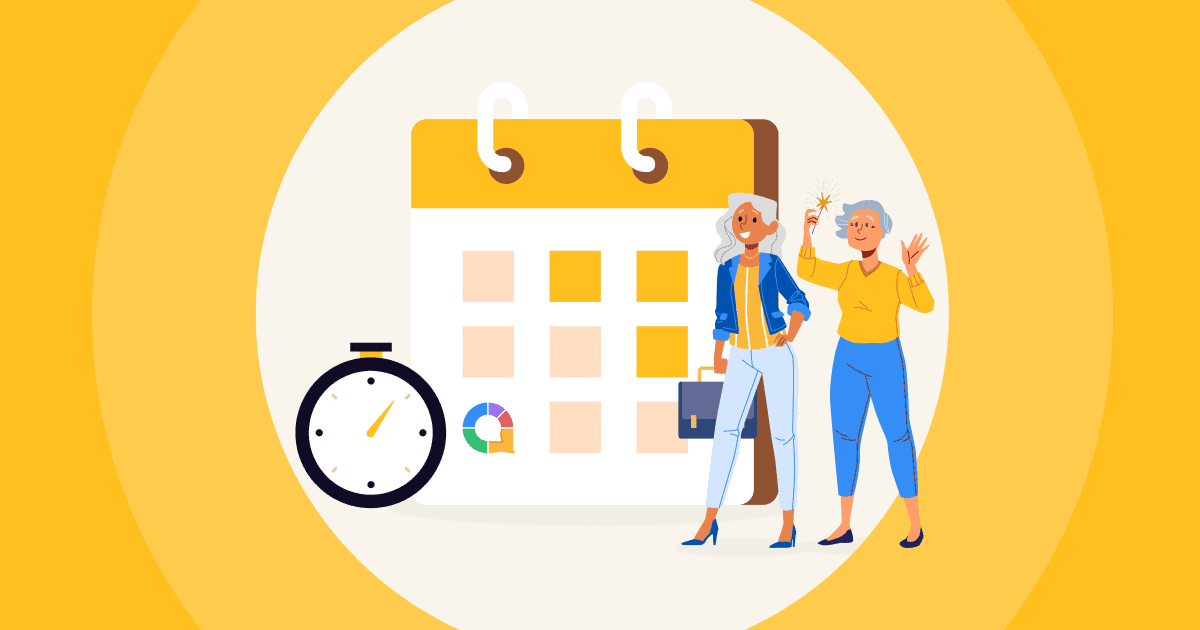近年來,倦怠的概念變得更加普遍。 COVID-19 爆發後,人們因應對持續的工作壓力或個人生活而感到疲憊不堪。
這麼多話題,你知道「倦怠」是什麼意思嗎?倦怠時該怎麼辦?又該如何從倦怠中恢復?讓我們來探索一下全面恢復的五個步驟。
目錄
你真的倦怠了嗎?
確定你是正在經歷倦怠還是只是暫時的壓力至關重要。每種情況都需要不同的應對方法。
那麼,什麼是倦怠呢? 職業倦怠 是一種因長期過度壓力而導致的情緒、身體和精神疲憊狀態。它通常發生在你感到不知所措、過度勞累和被低估時,讓你感到精疲力竭並且無法滿足持續的要求。

倦怠的主要特徵包括:
- 衰竭:大部分時間都感到疲倦和疲憊,無論是身體上或情緒上。即使休息後,這種疲憊感也常常持續存在。
- 憤世嫉俗和超然:對曾經有益或令人愉快的工作或活動失去興趣。對工作和同事的疏離感很常見。
- 無效率的感覺:一種無用或失敗的感覺,感覺自己所做的一切都沒有帶來改變或受到讚賞。
確保你正在經歷的與倦怠的描述相符。這是邁向復原的關鍵先決條件。
如何從倦怠中恢復?
從倦怠中恢復是一個漸進的過程,需要耐心、自我同情,並致力於在生活中做出積極的改變。它包括重新評估您的優先事項、設定現實的目標以及實施自我保健實踐。
以下是從倦怠中恢復的 5 個步驟:
#1 承認並接受你的感受
恢復的第一步是承認您正在經歷倦怠。這種認識至關重要,因為它為必要的變革奠定了基礎。
承認倦怠意味著你已經準備好著手解決導致這種狀態的根本問題。此刻,你將不再將壓力視為生活中不可避免的一部分,而是積極尋求解決方案和改變策略。
這種接納為尋求支持打開了大門,無論是與主管溝通工作壓力,尋求治療師的專業協助,或是改變生活方式。體認到倦怠是邁向康復、健康和幸福的第一步,或許也是最重要的一步。
#2 尋求支持
不要獨自應對倦怠。向家人、朋友或同事尋求情感支持。與你信任的人傾訴你的感受和經歷,可以帶來新的視角、實用的建議,以及一種簡單的安慰,讓你知道你並不孤單。
在專業環境中,請考慮與導師、人力資源代表或您信任的主管交談。如果倦怠嚴重,向心理健康專家尋求協助可以為您提供量身定制的恢復策略。
#3 設定界線並學會說不
倦怠的常見原因之一是過度投入。評估您目前的職責並確定可以設定界限的領域。學會對會增加壓力的額外任務或義務說不。優先考慮你的工作量,並專注於重要且有成就感的任務。
首先全面審視您的個人和職業承諾。是否有一些任務或角色特別消耗您的精力或佔用您過多的時間?考慮其中哪些是必要的,哪些可以被委託、最小化或消除。
#4 實施減壓技巧
將減輕壓力的做法納入您的日常生活中。進行正念冥想特別有益,因為它有助於集中思想並減少壓力帶來的沉思。每天只需幾分鐘的正念就可以顯著降低壓力水平並提高您的整體幸福感。
深呼吸練習是另一個簡單而強大的工具。它們幾乎可以在任何地方進行,只需幾分鐘即可幫助平靜心靈並減輕身體的緊張感。 4-7-8 呼吸法或膈式呼吸等技術因其即時鎮靜效果而聞名。
瑜珈結合了身體姿勢、呼吸控制和冥想,提供了緩解壓力的整體方法。定期練習可以提高靈活性、力量、平衡性和思維清晰度,所有這些都有助於減輕壓力。
此外,定期進行體能訓練也是有效的減壓方式。散步、跑步、游泳或騎自行車等活動不僅能增強體質,還能改善情緒,減輕焦慮和憂鬱症狀,這要歸功於內啡肽的釋放,內啡肽通常被稱為人體天然的「感覺良好」荷爾蒙。
#5 重新評估並調整你的生活方式
仔細看看您的生活方式選擇和整體 工作與生活的平衡。確保您有足夠的睡眠,均衡的飲食,並騰出時間進行休閒活動和嗜好。考慮您的職業生涯是否需要做出任何長期改變,例如換工作、減少工作時間或採取不同的工作方式。
完全恢復通常需要多長時間?
從倦怠中完全恢復所需的時間因人而異,取決於多種因素,包括倦怠的嚴重程度、個人情況、所採用的恢復策略以及個人的整體健康狀況和適應力。

以下是一些一般注意事項:
- 嚴重性:恢復時間通常與倦怠的嚴重程度和持續時間有關。如果倦怠症狀相對較輕並儘早解決,恢復可能會更快,可能在幾週到幾個月內。在嚴重倦怠的情況下,一個人可能會經歷嚴重的身心疲憊,恢復可能需要幾個月甚至更長的時間。
- 個別情況:個人情況,例如工作環境、家庭責任和支持網絡的存在,在恢復時間中起著至關重要的作用。支持和理解的環境可以促進更快的康復。
- 健康和生活方式因素:一般健康和生活習慣會影響恢復過程。有潛在健康問題或不健康生活習慣(如不良飲食、缺乏運動或睡眠問題)的人可能需要更長的時間才能恢復。
- 復原策略:所採用的策略和治療的有效性會影響恢復時間。這包括做出必要的生活方式改變、尋求專業幫助以及實施有效的壓力管理技術的能力。
- 對恢復的承諾:個人致力於積極參與復健實踐,例如設定界限、進行自我照顧以及可能做出重大的生活或工作改變,這一點至關重要。
增強倦怠復原能力的 3 個技巧
實施這三種策略可以增強應對壓力的能力並減少倦怠的可能性。
- 制定健康的應對策略:當壓力出現時,有一套健康的應對機制。這可以包括冥想和深呼吸練習等正念練習,以及定期的體能訓練。
- 加強社會支持網絡:與能夠提供情感支持和理解的家人、朋友和同事建立關係。與人交談並分享您的經歷可以顯著減少不知所措的感覺。
- 優先考慮自我保健並設定界限:自我保健是復原力的重要組成部分。這意味著優先考慮充足的睡眠、均衡的飲食、花時間放鬆和充電。學會在個人和職業生活中設定界限是另一個關鍵方面。
包起來!
那麼,如何從倦怠中恢復呢?這需要一個循序漸進的過程。快速或激進的補救措施可能會導致沮喪。耐心以及持續、全面的壓力和健康管理方法是關鍵。同樣重要的是,不要倉促回到導致倦怠的高壓力環境,因為這可能會導致復發。定期諮詢醫療保健或心理健康專業人士,可以幫助評估進展情況,並根據需要調整恢復策略。








